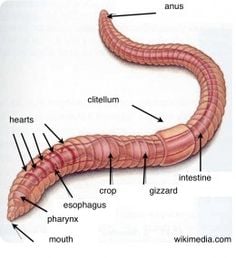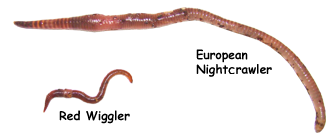Purchase Red Wiggler Worms - Suitable for Composting and Horticulture
Purchase Red Wiggler Worms - Suitable for Composting and Horticulture
Blog Article
Taking Full Advantage Of the Advantages of Red Wiggler Worms: A Comprehensive Guidebook for Home Gardeners and Urban Farmers
In the world of lasting horticulture techniques, red wiggler worms stand as unhonored heroes, quietly changing organic waste right into nutrient-rich castings that can function marvels for soil health. As home garden enthusiasts and city farmers increasingly look for eco-friendly and economical ways to boost their yards, the possible benefits of taking advantage of the power of red wigglers can not be overstated. From reducing kitchen area waste to cultivating healthier plants, the utilization of these simple animals supplies a variety of benefits. By discovering the ins and outs of just how to effectively take care of and make the most of the advantages of red wiggler worms, individuals can unlock a riches of chances for boosting the sustainability and performance of their gardening endeavors.
Recognizing Red Wiggler Worms
Red Wiggler worms, renowned for their reliable composting capacities, are a varieties of earthworms extensively utilized in vermiculture practices. These worms, clinically called Eisenia fetida, flourish in rotting natural product, making them perfect candidates for composting (Red Wiggler Worms). Red Wigglers are starved eaters, qualified of eating their very own weight in natural waste daily. Their digestive process breaks down organic matter right into nutrient-rich castings, which are an important resource for enhancing dirt and promoting plant development.
One secret quality of Red Wiggler worms is their reproductive price. These hermaphroditic creatures possess both male and female reproductive organs, allowing them to reproduce swiftly under positive conditions. A mature Red Wiggler can create multiple offspring in a short duration, making certain a consistent population within a composting system.

Establishing a Worm Container
When developing a worm bin for vermiculture objectives, correct preparation and focus to detail are necessary for developing a helpful atmosphere for Red Wiggler worms. Begin by selecting a suitable container for your worm container. This can be a plastic or wooden container with a lid to preserve wetness levels and secure the worms from light. Ensure that the container has drainage holes at the base to prevent waterlogging.

Place the worm container in an awesome, dark location away from straight sunshine and extreme temperatures. By following these actions, you can set up a flourishing worm bin that will successfully process organic waste right into nutrient-rich vermicompost for your garden.
Feeding and Maintaining Worms
Ensuring a healthy and balanced diet is critical for the health and wellness and efficiency of Red Wiggler worms in a vermiculture blog system. Red Wigglers are voracious eaters, efficient in eating their very own body weight in natural matter daily. To keep a flourishing worm population, it is vital to supply them with a variety of food scraps such as fruit and veggie peels, coffee grounds, tea bags, and smashed eggshells. It is essential to stay clear of feeding them citrus fruits, onions, garlic, dairy items, meat, and oily foods as these can be hazardous to the worms or create unpleasant smells in the bin.
Correct dampness levels are additionally important for the health of Red Wiggler worms. By faithfully checking their diet, dampness, and ecological problems, home garden enthusiasts and city farmers can maintain a healthy and effective Red Wiggler worm population for composting functions.
Gathering Worm Spreadings
To successfully draw out nutrient-rich worm castings from the vermicompost, an organized harvesting process is crucial for taking full advantage of the composting advantages. Red Wiggler Worms. The primary step in harvesting worm spreadings is to encourage the worms to move to one side of the container. This can be accomplished by placing fresh food scraps on one side and leaving the various other side undisturbed for a couple of days. When most of worms have actually moved to the side with fresh food, the spreadings can be collected from the contrary side.
After the castings have been collected, it is necessary to divide any kind of continuing to be worms from the spreadings to prevent hurting them during storage space or application. One efficient approach is to develop conical heaps of castings under brilliant light. Worms will intuitively relocate far from the light, enabling easy separation and elimination.
Lastly, the harvested worm spreadings ought to be kept in an amazing, dark, and completely dry location to keep their high quality and effectiveness as a nutrient-rich dirt amendment. By following these steps, home garden enthusiasts and city farmers can make the most of the advantages of red wiggler worms in their vermicomposting systems.
Using Worm Castings in Horticulture
The unification of nutrient-rich worm castings right into yard soil can considerably boost plant growth and overall dirt health. Worm castings, also understood as vermicast, are an all-natural plant food produced by red wiggler worms as they damage down organic matter. These spreadings are abundant in important nutrients like nitrogen, phosphorus, potassium, and valuable microbes that promote plant growth and boost dirt structure.
When using worm castings in gardening, it is vital to blend them extensively right into the soil or use them as a top clothing around plants. The slow-release nature of worm spreadings makes sure a stable supply of nutrients her comment is here to plants in time, minimizing the risk of nutrient leaching and promoting lasting dirt fertility. Furthermore, worm castings aid boost soil oygenation, water retention, and microbial task, producing a healthy setting for plant origins to flourish.

Conclusion
In final thought, the use of red wiggler worms in home gardening and urban farming can significantly benefit soil health and plant development. By understanding how to set up and preserve a worm bin, feed the worms properly, and harvest their nutrient-rich castings, garden enthusiasts can make the most of the benefits of these earthworms.
In the world of lasting gardening techniques, red wiggler worms stand as unrecognized heroes, quietly changing natural waste into nutrient-rich spreadings that can work wonders for dirt health and wellness.When establishing a worm container for vermiculture purposes, correct preparation and attention to information are vital for creating a helpful atmosphere for Red Wiggler worms. The initial step in harvesting worm spreadings is to motivate the worms to move to one side of the bin. Worm spreadings, also recognized as vermicast, are a natural plant food produced by red wiggler worms as they damage down organic issue. By understanding just how to set up and preserve a worm container, feed the worms correctly, and collect their nutrient-rich castings, garden enthusiasts can take full advantage of the advantages of these earthworms.
Report this page